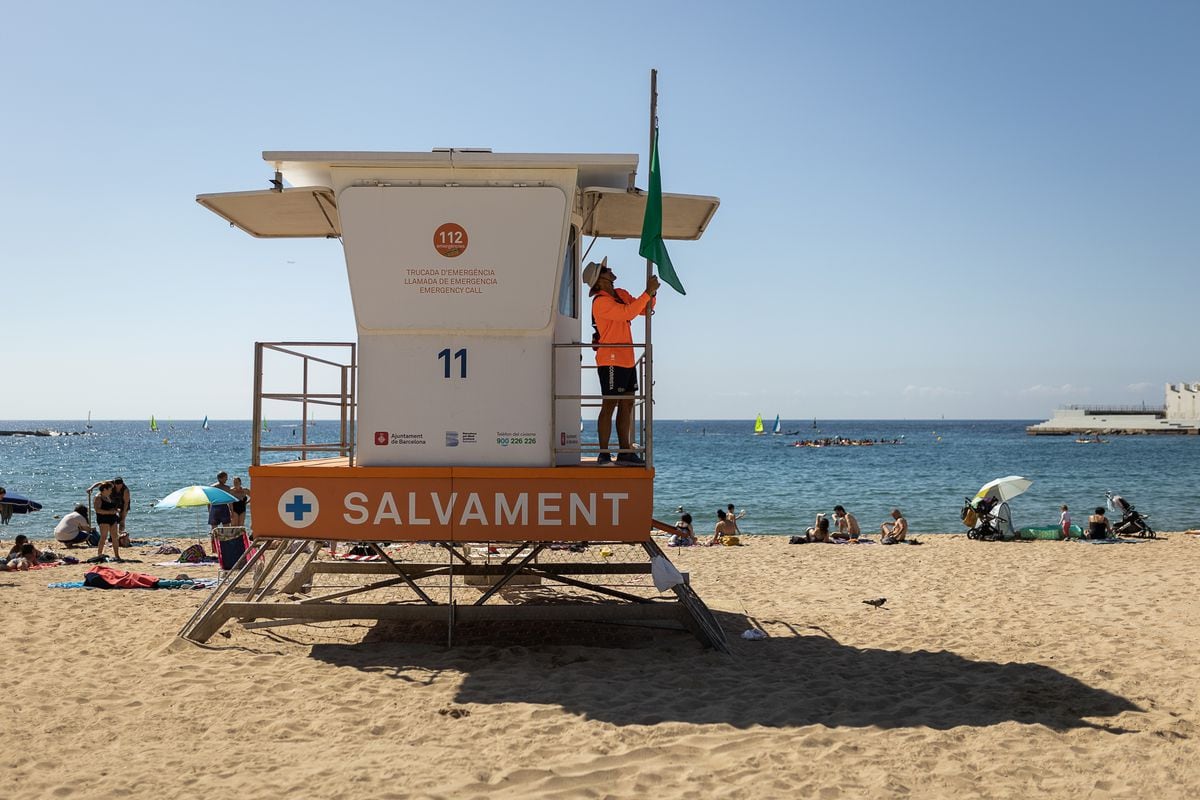Deaths by drowning in Spain this 2022 already exceed those of all of last year.
264 people have drowned since last January 1, according to figures from the Spanish Federation of Rescue and Lifeguards (Rfess), compared to 260 in 2021. Last summer, however, was still marked by restrictions.
Experts point to the end of the limitations, the increase in temperatures and the lack of aquatic culture as the factors that explain the current mortality figures.
The records for this 2022, in any case, are similar to the summers before the pandemic.
In the last 24 hours, four fatalities have been recorded: one in Tenerife and three in Salou, where lifeguards rescued two men aged 60 and 46, and the son of the latter, a minor under 15. The young man was admitted on Thursday in critical condition to the Joan XXIII hospital in Tarragona, where he died early this Friday.
The increase in drownings worries the president of the Rfess, Francisco Cano, who considers that the annual records may exceed 400 victims again in 2022, as already happened in 2019. "These figures must be reduced as it is", asks.
The end of the restrictions already anticipated a summer of greater risk on Spanish beaches and swimming pools, according to experts.
The increase in mobility and the massive arrival of tourists have stressed activity in coastal waters, but Cano points to the heat as a catalyst for accidents.
"We did not expect to have these high temperatures and for the summer to start earlier," he analyzes.
And to beat the heat, the easiest thing is to get into the water.
"The problem is that prevention policies have not changed and that the bathing season is still considered in many municipalities from June 15 to September 15, when the needs are different."
Ramses Martí is a specialist in aquatic safety and denounces the lack of logistics on the beaches and the precarious working conditions of lifeguards.
“We monitor with the same professionals and with almost the same infrastructures as 20 years ago.
The guards have to be separated by 200 meters to reduce the observation area, and this does not happen”, he insists.
According to the specialist, the lifeguards have to make a visual sweep of their entire surveillance area in 10 seconds to guarantee the safety of the bathers, and he understands that the current location of the professionals on the beaches does not comply.
"Professionals have to be a maximum of three minutes away to help someone, and that's already a lot," he insists.
From his watchtower,
But mortality is not explained solely by the precariousness of the workers.
The responsibility of bathers also influences, experts say, a lot.
The Rfess data reflect that a third of the fatalities are over 65 years of age, a trend that has been repeated over the last few years.
"They are people who often suffer a health problem and fall on the seafront," reflects Martí, who calls for greater awareness of their own limitations.
The aquatic safety expert calls for “influencing” clinics and with public campaigns so that multi-pathological or vulnerable users “do not go alone” to the beach or that they do so within hours with the active lifeguard service.
The Mar Menor, in Murcia, illustrates the danger of water among vulnerable groups, according to Cano.
It is a lagoon that “has hardly any danger”, but on the other hand the percentage of victims “is higher because there are more older tourists who sometimes do not do physical activity during the year or control their diet less”.
In any case, the very perception of danger and respect for water are announced as special factors to behave during the bath.
"We usually have a false sense of security and think that the situation is under control," warns Cano, who compares the data on the beaches of northern Spain (seven between Asturias, Cantabria and the Basque Country last July) with those of the Mediterranean (37 between Catalonia, the Valencian Community, Murcia and the Balearic Islands).
“In the Atlantic or the Cantabrian Sea there are much fewer people, but you already see bigger waves and you don't expose yourself as you would in the Mediterranean, which seems safer.
In the end we have to remember that the sea and the water are always stronger than us”.
Count without official data
The Spanish Federation of Rescue and First Aid (Rfess) carries out a monthly National Drowning Report that counts the number of fatalities recorded on beaches and swimming pools throughout Spain.
The document has become a barometer of the situation on the Spanish coast, but the figures are not official.
"The National Institute of Statistics takes a year to publish the registry of drowning deaths, and it does not serve to illustrate the danger of aquatic activities," complains Francisco Cano, president of the Rfess.
The entity carries out exhaustive documentation work through the media to account for each death day after day, but its representatives are aware that the data may be inaccurate.
"There is a fluctuation in the figures and a case may be lost," admits Cano.
For this reason, the 264 figures recorded are presented as minimum data.
"But the important thing is to make the population aware when things are not done well", closes the federative president.
You can follow EL PAÍS Catalunya on
and
, or sign up here to receive
our weekly newsletter

